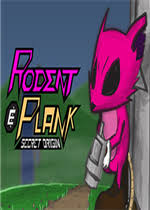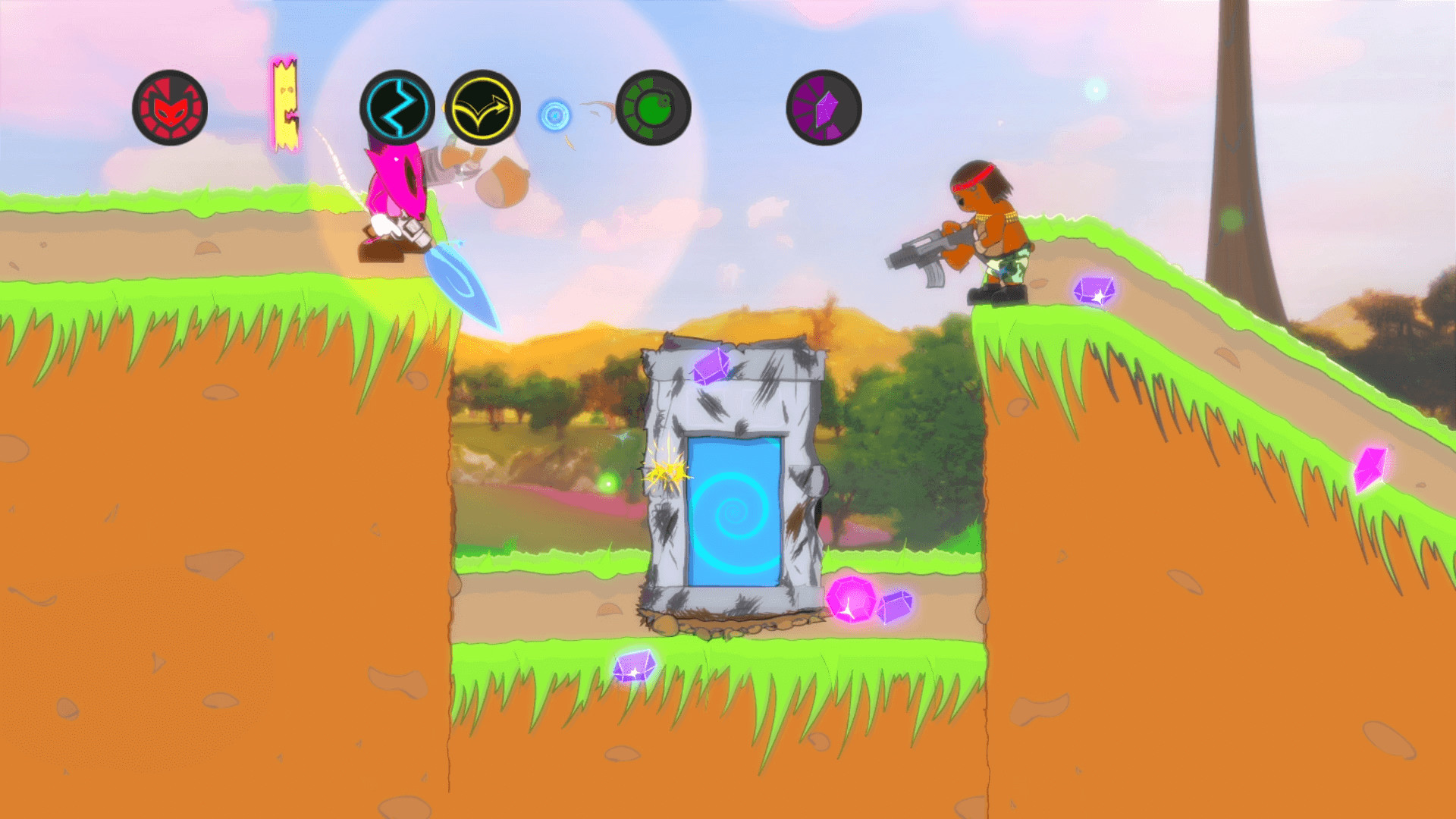Search
[{{{type}}}] {{{reason}}}
{{/data.error.root_cause}}{{{_source.title}}} {{#_source.showPrice}} {{{_source.displayPrice}}} {{/_source.showPrice}}
{{#_source.showLink}} {{/_source.showLink}} {{#_source.showDate}}{{{_source.displayDate}}}
{{/_source.showDate}}{{{_source.description}}}
{{#_source.additionalInfo}}{{#_source.additionalFields}} {{#title}} {{{label}}}: {{{title}}} {{/title}} {{/_source.additionalFields}}
{{/_source.additionalInfo}}- Details
- Category: Computer
- By Sam George
- Hits: 1685
Rodent and Plank: Secret Origin (PC)

Rodent and Plank: Secret Origin
Developed by: Lodder Digital Media
Published by: Lodder Digital Media
Release date: April 30, 2021
Available on: Windows, Linux
Genre: Run and gun shooter
Number of players: Single player
ESRB Rating: Not rated
Price: $14.99
Thank you, Lodder Digital Media, for sending us a review key!
Rodent and Plank: Secret Origin successfully scratches an itch for run and gun gameplay reminiscent of Metal Slug. Unlike its quasi-namesake, Ratchet and Clank, Rodent and Plank is a 2D platforming shooter. It is as difficult as the player wants it to be, able to change from a low-health one-life run to a forgiving romp with regenerating health and generous checkpoints. The game is quite short, though individual fights, especially with bosses, can feel too long. While “fun” and “tedious” can describe the gameplay of Rodent and Plank in turn, they are not the strongest impressions I took away from the game. Said strongest emotions are a combination of confusion, curiosity, and discomfort. This is because Rodent and Plank’s art direction and story are disjointed and unnecessary in a way that can only be achieved by a game sporting a rat mutated by “a sentient piece of cosmic driftwood.” The story starts weird, never explains itself, and ends with the main character shooting a sentient pig in the head. My memories of this game are tinted with bafflement.
The moment-to-moment gameplay works well. The titular rodent usually wields a gun shooting the combined result of two weapon types from a set: force, fire, bounce, and light. Powerups turn the player’s weapon into variations on a flamethrower, homing missile launcher, and more. The variations are delightful to play around with, and it’s easy to find a favorite combination or two. Grenades, health, and a screen-clearing special move can also be gained with item drops. In addition to shooting, the player can dash, shield, and jump. This humble toolkit, with practice, is enough to avoid damage completely. Controls are always responsive, allowing skillful or reckless play.

Strong Points: Accessible difficulty settings; Generous checkpoints; Varied boss mechanics
Weak Points: Short game; Overly long boss fights; scattered level themes
Moral Warnings: Cartoon animal violence involving guns, rockets, lasers, etc.
Most of the rodent’s time is spent fending off armed teddy bears whose time-to-kill is just a tad too high. Better than the standard combat are the occasional auto-scrolling levels which transform the plank into a submarine, snowboard, or airplane. The final level alters the gameplay in yet another direction which I won’t give away here. The standard levels have enough variety and enemy escalation to keep the running and gunning fresh.
The boss fights are the standout moments of the game, in good ways and bad. On the good side, they develop through multiple phases in unexpected and creative ways. Perhaps the boss only becomes vulnerable once drawn into eating an explosive on the screen, or the boss isn’t damaged directly at all and must be hit with rocket-like enemies. This variation is the greatest strength of the game. It is unfortunate that the fights can feel long. This is partly due to the difficulty. Most fights take multiple phases. Despite a checkpoint before each encounter, it can be tiresome to keep health up for the length of the fight. Turning on regenerating health helps with the difficulty while highlighting that the fight takes a long time even without the fear of dying. Almost as uncomfortable is the weird art flavor of the fights. Nothing could illustrate this as well as the game itself, so I’ll describe the first major boss fight. It starts with a goat that dashes across the screen, occasionally shooting out fire. The second phase takes place on a bridge, where a goat leaps again and again while producing more fire from its backside. The third phase, on the other side of the bridge, entails fighting a goat streaking through the air in a manner reminiscent of a magical unicorn, producing stars that fall behind it. Finally, the goats combine into one ancient caprine beast that promptly falls into bed and sets an alarm clock. That clock is the actual final phase. It must be destroyed so the goat creature can fall asleep and never wake again.

Higher is better
(10/10 is perfect)
Game Score - 66%
Gameplay - 12/20
Graphics - 5/10
Sound - 7/10
Stability - 4/5
Controls -5 /5
Morality Score - 92%
Violence - 7/10
Language - 10/10
Sexual Content - 10/10
Occult/Supernatural -10 /10
Cultural/Moral/Ethical - 9/10
Perhaps that fight sounds fun. For the most part, it is. However, it was long and hard and began my struggle to determine if this game can accurately be described as “crude.” In most cases “crude” doesn’t fit. Not to put too fine a point on it, but goats seemed to fart fire. It’s a bit ambiguous; the graphics are drawn with care but little detail. That’s the most traditionally crude the game gets, yet not the most uncomfortable. A later level sees the rodent descending a giant’s throat via its uvula. A miniboss involves a girl jumping on a couch to dislodge dandelion-like spores which turn into enemies upon hitting the ground. A queen hornet boss produces live exploding young to fend off. As previously mentioned, most of the enemies are teddy bears brandishing guns. Despite moments of creativity and cleverness, at no point do the random settings become meaningful or funny. The music is decent and appropriate to the differing levels. Thankfully, the sound design is not gross despite multiple opportunities to be so.
The game jittered on a few level transitions and crashed during one; fortunately, it already saved the previous level completion. The difficulty is only as high as you want it to be; the regenerative health option would allow most people who try the game to finish it. Difficulty can be turned up for subsequent playthroughs. Thinking of the game in terms of multiple playthroughs is the most generous accounting of its short runtime of under two hours. If you are not inclined to play a game like this several times, the price could be too high. Aside from this caution and the game’s pervasive strangeness, I am happy to recommend Rodent and Plank to fans of the genre.








